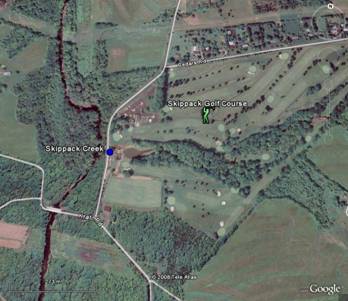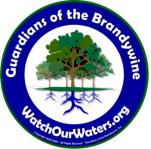The science is in on zacharias creek!
Delaware Riverkeeper Network collected water chemistry data along the Zacharias Creek which flows through the Skippack Golf Course. The sample station was located adjacent to the golf course but near the downstream end to the golf course and close to the confluence with Skippack Creek. During the sample collection period, the golf course was a member of the Audubon certification program. Data was collected from 1999-2003. A summary of the site location and data collected is below:
General Sampling Station Location – ZA002

You can note in the table below, that nitrogen levels were above 1.0 mg/l indicating water quality pollution (healthy streams usually have a nitrate-nitrogen level of <1.0 mg/l).
Zacharias Creek (ZA002) |
|
Nitrate-Nitrogen Summary (mg/l) |
|
Average Nitrate-Nitrogen (NO 3 -N mg/l) |
1.8 |
Average Nitrate (NO 3 -N mg/l) |
7.9 |
Minimum Nitrate (NO3-N mg/l) |
<0.2 |
Maximum Nitrate (NO3-N mg/l) |
4.5 |
Count of Complete Datasheet |
21 |
Summary of Macroinvertebrate Data Collected at ZA002
We also conducted two years of benthic water monitoring at this location (see site map below for location of sample station). Macroinvertebrates were collected in April 2000 and 2001 at Sample Station ZA002. In both years, the Zacharias had a “Fair” rating using EPA Metrics (Volunteer Stream Monitoring: A Methods Manual, 1997). This Fair rating indicates pollution tolerant species were more abundant than pollution sensitive organisms. In 2001, midge larvae and threadworms, two pollution tolerant organisms, dominated the sample with over 100 midges and 120 threadworms counted. Black fly larvae (another pollution tolerant species) was also common at the site with 63 black fly larvae present. Meanwhile, that same sampling period, there were very few pollution sensitive organisms present. There were only 3 water penny counted, 3 mayflies, 2 riffle beetles, and 1 non-net spinning caddisfly counted at this site.
Protecting our quality of life is very important and should be done in an open and inclusive process.


